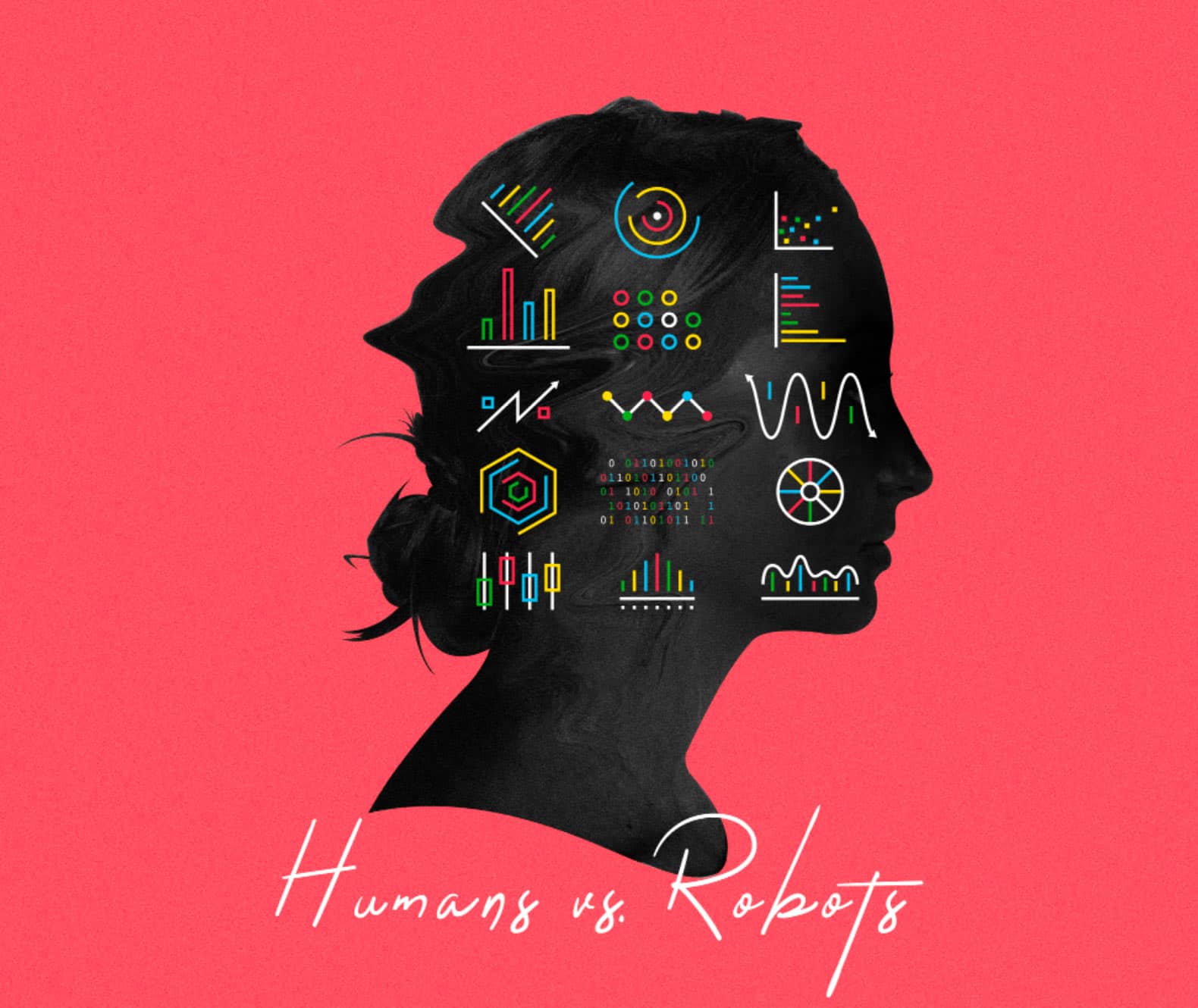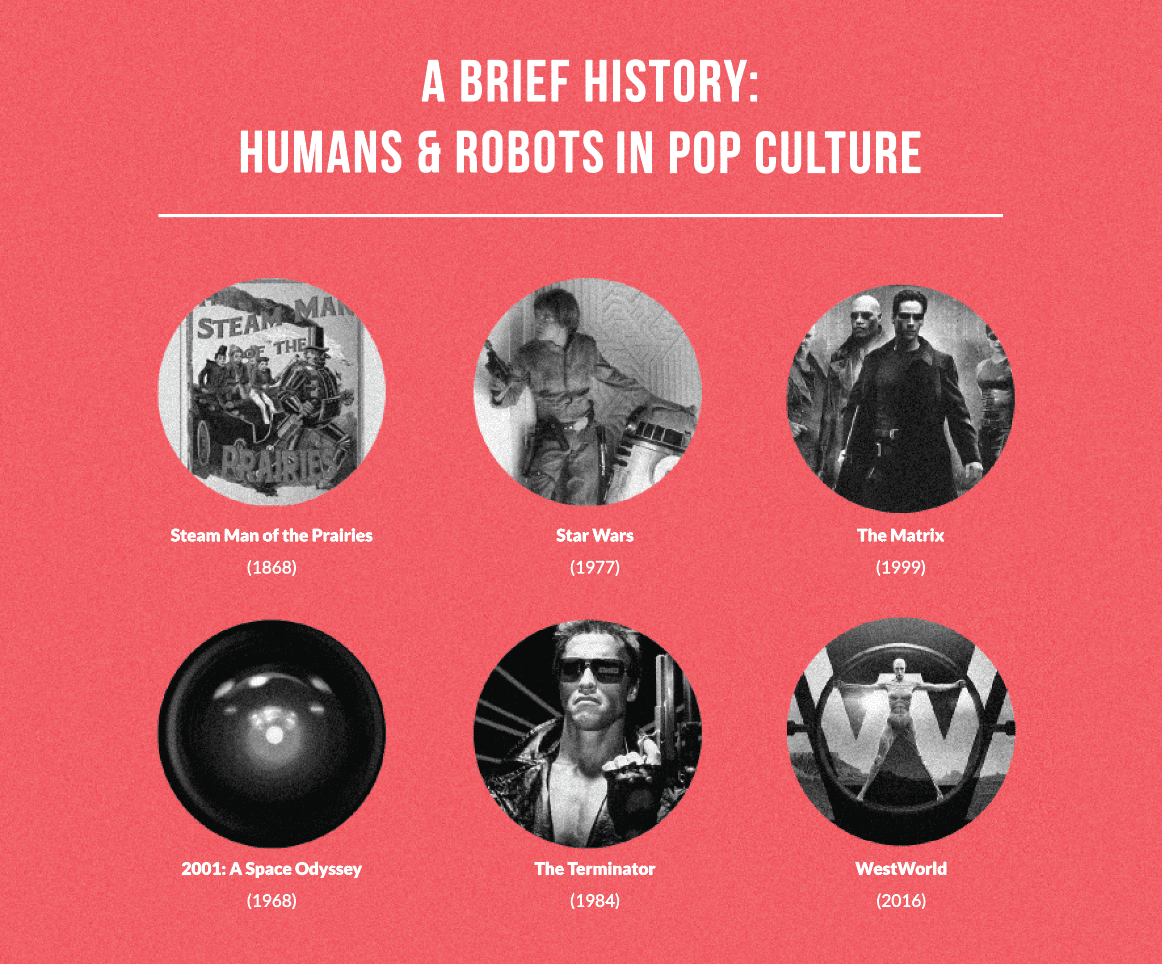Humans vs. Robots

In 1868, the first robot portrayal in literature appeared in “Steam Man of the Prairies,” a science-fiction dime-novel by Edward S. Elliot where a steam-powered humanoid helped stranded travelers pull a carriage. Since then, the relationship between robots and humans has been the subject of many pop culture pieces, from 2001 A Space Oddessy’s “HAL 9000,” to the recent cult following of the “Westworld” remake.
We’re ready for driverless cars. Facebook uses AI to collect our information and serve us personalized ads. We turn Alexa into our personal assistant and expect our refrigerators to text us when we’re out of milk.
Possibly the same day we receive that text, we scream into the phone when an automated answering service answers our call instead of a human.
In this issue of Logic + Magic, we explore the relationship of robots (more specifically, everything surrounding automation) and humans within your marketing mix. With the recent surge of automated, marketing products, it’s hard to tell what’s the best use of your manpower and what’s the best use of your technology.
ROBOTS
At first glance, we can easily see how “robots” have increased productivity within the marketing space. Hundreds of marketing automation solutions are already tackling many basic marketing activities – from email blasts to real-time social media placement, giving marketers unprecedented reach.
And each piece of automation has a profound impact. Recent information leaks have shown us just how easily automation can influence purchasing decisions, to potentially influencing elections.
The benefits of using automation for your marketing are as vast and varying as the systems themselves. Deriving meaning from Big Data – marketing research surveys, for example – is a task that can be much more easily done using automation.
What could take a team of researchers weeks to complete can now be done in minutes. Even what used to be impossible, such as automation deriving sentiment from surveys, is starting to becoming a reality with new discoveries in machine learning.
What used to be “spray and pray” methods of ad placement determined by humans are now complex algorithms that can deliver your content directly to your end-user – at the exact right time they need to see your message.
Data-driven marketing is reshaping the world of marketing as we know it, using customer-centric strategies and integrated platforms to dramatically shift the marketing landscape. Faster, more accurate decisions are able to be made. Marketers are able to move beyond segmentation and in to one-to-one content personalization in real-time.
Individualized marketing is a priority, and data-driven marketing is making it a reality.
We are only on the cusp of what robots can do for businesses. And consumers are eager to improve their lives with these devices, which provides marketers with information for more personalized communications. The Internet of Things is now allowing advertisers to serve individualized content exactly when the audience needs it – right consumer, right time, right place, right message.
And the possibilities are endless – imagine walking home from an event when it starts to rain. Your watch knows you’re walking home, knows it’s going to start raining, sends you a discount code for a rideshare service and even allows you to order a car with a couple taps. Fifty-one percent of the world’s top global marketers expect that IoT will revolutionize the marketing landscape by 2020, according to Socio Fabrica.
HUMANS
Danger, Will Robinson. How do we know where to draw the line between automating your marketing to allow for faster and more consistent throughout, but losing the touch and cognizance only a human can provide?
Despite leaping advances in AI, we still see a distinct difference in the way machines interact and the way humans interact. AI may be able to replicate a decent facsimile of a human in controlled, specific environments.
But in situations that require creativity and empathy, critical thinking, leadership, and other specifically “human” characteristics, we are still worlds away from “Westworld”-level exchanges. Relying too heavily on robots when a sentient mind is needed is where customer service begins to unravel for many businesses.
Elon Musk admitted to over-automating his Tesla production line with too many robots and too few humans, causing “a crazy, complex network.” He acknowledged the company has been far too reliant on robots for production, Tweeting for clarification, “Humans are underrated.”
While some consumers appreciate the autonomy and speed that robots provide, users are just as quick to become frustrated when a human interaction is necessary, yet unattainable.
Although neural networks may be manmade, they cannot replicate the relationship building and connection that a human can with your clients. Chatbots are already changing the landscape of customer service interaction, with one survey by Oracle suggesting 8 out of 10 businesses have already implemented or are planning to adopt AI as a customer service solution by 2020.
But 83 percent of consumers still prefer dealing with human beings for customer service, even if this includes a wait time to speak to a human, according to a study by Accenture.

In the end, a smart marketer will use solutions that marry the ease of automation and the high-touch of human connections, finding the right balance of both.
In this issue, we’ll explore a world where humans and robots can coexist peacefully, creating the ultimate marketing mix for your brand.